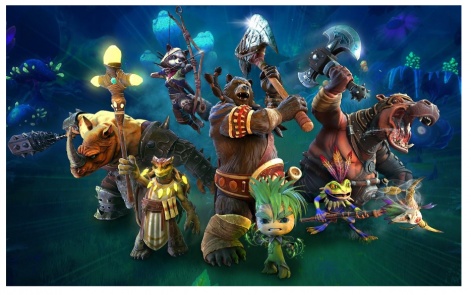The games industry has had a tumultuous ride over the last year.
Mobile has been through the storm of Apple’s IDFA changes, leading to a post-ATT landscape that has shaken the very foundations upon which the industry has been built. While claiming to protect user privacy, Apple has hamstrung big tech rivals and ad networks while bolstering its own. And developers have struggled to scale profitably as a result.
Then you have web3. The crypto market had some notable implosions last year, including the FTX scandal and bankruptcy, while NFTs have so far failed to break through. But there are a number of companies still working in the space, backed by big investments, still believing that web3 (and associated tech) is the future of games.
Fighting the web3 backlash
Mike Levine, founder and CEO of Mystic Moose, a web3 developer that picked up $5 million in investment to build a suite of interconnected blockchain games, believes the “slate’s almost been wiped clean” on mobile. And as for web3 specifically? Speaking to us earlier this year at GDC, he vented his frustration at the notion that crypto is dying and the backlash blockchain has faced…
“‘Crypto's dying’, no it's not,” Levine remarked. “In fact, if you understand web3, FTX wasn't even web3, it was a centralised exchange. That was the whole point, that's why it fell. If something is truly decentralised, that can't happen.”
Levine worries that, given the negative connotations that now inherently come with NFTs and blockchain to the mass market, that Western studios are falling behind.
“This a force that can't be stopped, and as usual other parts of the world are ahead of us,” he says. “Just like free-to-play. We were way behind Asia and that part of the world. And we were maybe going to be on par with them, but in North America and Europe we just get too freaked out over things that really don't have relevance to this.”
One criticism levelled at web3 games is a perceived lack of focus on fun in favour of the economy of it. Levine says Mystic Moose’s strategy is to make a fun game first: “that’s all that really matters”. But he does believe in the possibilities for web3 to empower players and says it’s only going to become more accessible.
The trough of disillusionment
Game developers did not make the first wave of blockchain games. They were made by blockchain programmers who were trying to make games.Mike Levine
Levine states that developers need to “define a new set of rules” for web3, one with less baggage. The current negativity around the space, he says, largely extends from a lack of understanding of what web3 games even are and from what consumers have heard about NFTs.
The sector has been through the early hype and, more recently the ‘trough of disillusionment’, but now web3 is ready for its big comeback, says Levine.
“I think we've hit the bottom and I think it's starting to slowly come back now,” says Levine. “This is the next wave of games. That's the other thing, game developers did not make the first wave of blockchain games. They were made by blockchain programmers who were trying to make games.
“Whereas, the new wave of developers, which we are, and others here, we're real game developers. That's what we've been doing for years, and we're putting the game and the fun first, just using the web3 stuff as an enabler for people who want to make that jump.”
He adds: “Like to the average consumer, they don't really care about the ethos under blockchain and decentralisation. They want to know: ‘what's in it for me?’. Why did free-to-play take off? It was free, it was a good deal. So we have to convince players.”
The great reset
Part of Mystic Moose’s pitch for its take on web3 is in enabling players to turn their NFTs into real-time 3D models, rather than what he says are effectively typically static JPEGs from other offerings. These ‘Mojos’ can be customised with items and collectibles to create a personalised digital asset.
The company is also making a suite of games, such as its auto-chess battler Mojo Melee, and these NFTs will be available to use in all of them. While the game is available to play through the browser right now, the team’s aim has always been to release the title on mobile and try to reinvent the genre on the platform.

The idea of ‘ownership’ in web3 has been discussed at length, but while it’s central to web3, the concept has still to really gain traction in the mass market. It’s often hidden behind complex terminology, unfriendly user interfaces, and held back largely by some poor, high profile implementations.
But Levine believes that in future, game economies where you don’t truly own what you buy are what will be considered a scam.
“The next generation of gamers is going to look back at the last 30 years of gaming and just go like, ‘You guys were totally scammed, right?’,” says Levine. “You were had, because you were just giving money and there was no value in it, right? If you play a physical game, like Magic: The Gathering, when you're done with it, you could try to sell those cards on eBay.”
Quoting a VC, Levine says web3 is going through ‘the great reset’, much like the larger mobile games market. This is because of bad decisions in early web3 titles, such as the focus on speculators rather than gamers.
“That's where we've always been like, ‘We're here for the gamers’,” says Levin. “There's always going to be high-end collectors, that's fine. But we need to have that base layer for the mass audience to understand it and bring them into it.”






















